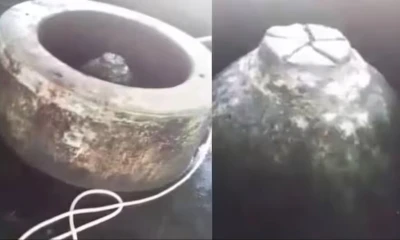Edited by Deepali Verma
The ASI’s survey report on the Gyanvapi mosque was made public only recently and it claimed that the mosque in Varanasi was constructed after demolishing a magnificent temple. The Hindu side on January 29 has filed an application in the Supreme Court seeking the de-sealing of the ‘wazukhana’ area in the Gyanvapi complex, which was sealed in 2022 following a Supreme Court order.
The Hindu side’s plea has asked the Supreme Court to allow the Archaeological Survey of India (ASI) to carry out an extensive survey in the ‘wazukhana’ area without causing any harm to the ‘Shivling’.
“Instruct the Director General of Archaeological Survey of India to carry out the necessary investigation/survey of the Shivlingam in order to determine the nature of Shivlingam and associated features without causing any harm to the Shivlingam that is placed within the sealed area,” the plea stated, adding that the ASI must undertake survey of the complete sealed area by excavation and using other scientific methods and submit its report before the court.
“The ASI that is the premier authority can conduct scientific survey of the entire sealed area, including the Shivlingam, to put forth the truth in the matter.”
The plea further stated, “The ASI may receive additional instructions to conduct a survey in the entire sealed area and also of the Shivlingam, to make sure whether the same is a fountain or not.”
“The Shivlingam area is surrounded by raised artificial walls that are of modern construction unconnected with the original building. The area has zero religious significance for Muslims which is an alleged fountain, as per them,” the plea stated, adding that the only reason the modern construction figures in that area is only to hide the original features associated with the Shivlingam, such as Peeth, Pithika, etc.

















